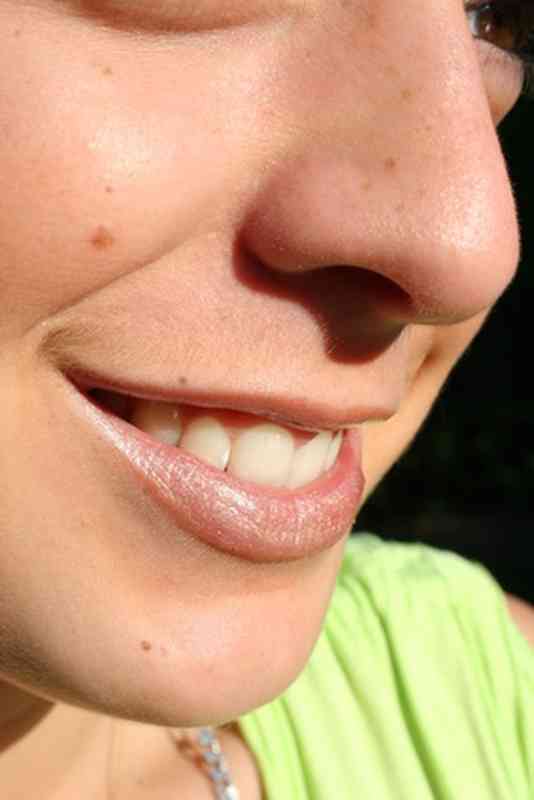Chin Acne in Women

Adult acne is a common skin condition. Depending on the circumstances, a woman may develop significant amounts of this type of acne on the chin, as well as other areas on the lower face such as the jawline and skin surfaces near the mouth. Fortunately, there are a number of treatments available to reduce or eliminate chin acne and other forms of adult acne.
 A young woman looking at her face in a mirror. (Image: GreenReynolds/iStock/Getty Images)
A young woman looking at her face in a mirror. (Image: GreenReynolds/iStock/Getty Images)The Basics
In some cases, you may develop chin acne from persistent forms of acne that carry over from adolescence, according to the American Academy of Dermatology, or AAD. You may also develop adult symptoms that appear suddenly, whether or not you had acne during your teen years. In both forms of acne, your symptoms may include the presence of inflamed, tender nodules or pimples below the surface of your skin. In the case of adult-onset acne, you may also develop acne on your back or chest.
Acne Factors
In roughly 50 percent of cases, individuals with adult acne also have close relatives with acne, the AAD reports. Women who experience significant levels of stress may also produce unusually high amounts of the male hormones called androgens, which in turn can lead to oil gland overstimulation and the onset of chin or facial acne. If you normally take birth control pills that contain both estrogen and progestin, you may develop acne symptoms if you discontinue their use. If you take birth control pills that contain only progestin, you may experience a worsening of existing acne symptoms. In addition, use of greasy sunscreens may promote a form of adult acne called acne cosmetica, the AAD notes.
Hormonal Changes
Hormonal fluctuations associated with menstruation, pregnancy or menopause can also help trigger chin acne and other forms of adult acne, according to the AAD. Hormonal changes can produce mild or moderate acne in some women. However, hormonal changes do not typically constitute a major trigger for your acne symptoms.
Treatments
The AAD lists potential topical treatments for mild or moderate adult acne in women that include prescription or nonprescription retinoid medications; nonprescription products that contain both sulfur and sodium sulfacetamide; and products that combine antimicrobial medications such as clindamycin with benzoyl peroxide. If you have acne related to hormonal changes, your doctor may recommend treatments such as spironolactone, oral birth control pills and hormone replacement therapy. In some cases, use of oral antibiotics may also help control your symptoms. Severe cases of acne may require treatment with oral doses of a medication called isotretinoin.
Considerations
The treatment of adult acne can be challenging, and reduction of severe symptoms may take as long as months or years. You must also treat your skin properly to avoid worsening chin acne and other acne symptoms. To promote healthy skin conditions, the AAD recommends that you use mild facial cleansers and avoid scrubbing your skin roughly while washing. You should also avoid picking, popping or squeezing your existing acne blemishes.




